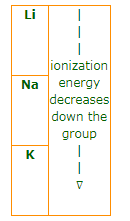MCQ (Previous Year Questions) - Classification Of Elements & Periodicity In Properties (Level 2) - JEE MCQ
21 Questions MCQ Test - MCQ (Previous Year Questions) - Classification Of Elements & Periodicity In Properties (Level 2)
Moving from right to left in a periodic table, the atomic size is : [JEE 1995]
The increasing order of electronegativity in the following elements :
[JEE 1995]
One element has atomic weight 39. Its electronic configuration is 1 s2, 2s2, 2p6, 3s2, 3p6, 4s1. The true statement for that element is : [JEE 1995]
An element belongs to period 2 and group 2 th number of valence electrons in the atoms of this element is.
The decreasing size of K+, Ca2+, Cl- & S2- follows the order : [REE 1995]
Which of the following oxide is neutral ? [JEE 1996]
Which of the following has the maximum number of unpaired electrons
[JEE 1996]
The following acids have been arranged in the order of decreasing acid strength. Identify the correct order
[JEE 1996]
(I) ClOH
(II) BrOH
(III) IOH
The incorrect statement among the following is : [JEE 1997]
Which of the following are amphoteric ?
[REE 1997]
Identify the wrong sequence of the elements in a group
Anhydrous AlCl3 is covalent. From the data given below predict whether it would remain as a molecule or converts into ions in aqueous solution. [JEE 1997]
[L.E. for AlCl3 = 5137 kJ/mol]
ΔH hydration for Al3+ = -4665 kJ/mol;
ΔHhydra for Cl- = -381 kJ/mol.
Which one of the following statement (s) is (are) correct ?
Assertion : F atom has less negative electron gain enthalpy than Cl atom [JEE 2000]
Reason : Additional electron is repelled more efficiently by 3p electron in Cl atom than by 2p electron in F atom.
Assertion : Al(OH)3 is amphoteric in nature.
Reason : Al - O and O - H bonds can be broken with equal case in Al(OH)3 [JEE 2000]
The correct order of radii is : [JEE 2000]
The correct order of acidic strength is : [JEE 2000]
In the third period of the periodic table the element having smallest size is
The set representing correct order of IP1 is [JEE 2001]
Identify the least stable ion amongst the following : [JEE 2002]
Identify the correct order of acidic strengths of CO2, CuO, CaO, H2O :
[JEE 2002]















